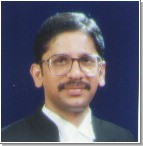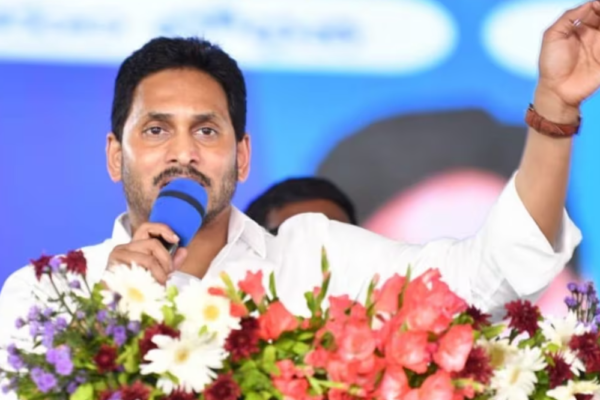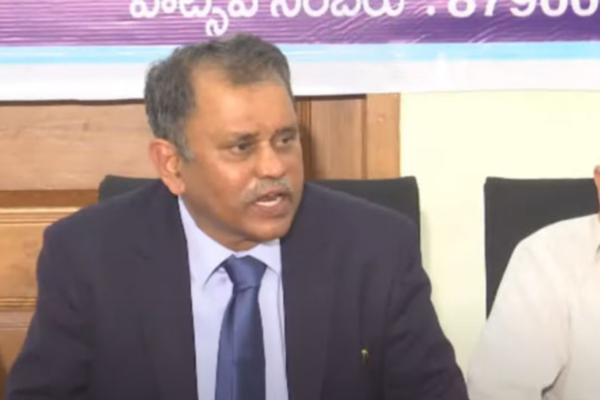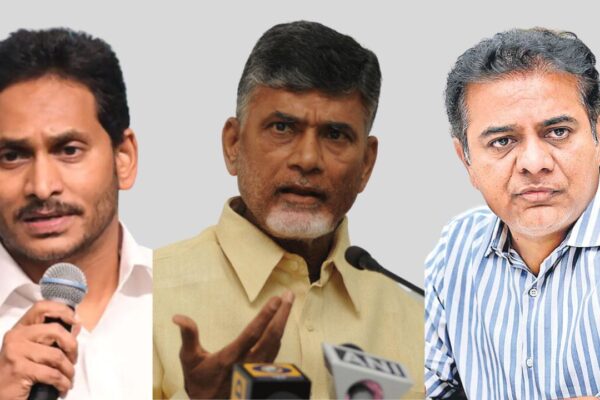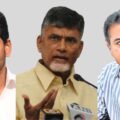
 Justice Ramana case is a classic example of how the judicial system can be abused to serve petty political ends and how judges have become punch bags in the no-holds-barred power play by politicians.
Justice Ramana case is a classic example of how the judicial system can be abused to serve petty political ends and how judges have become punch bags in the no-holds-barred power play by politicians.
This is probably for the first time in recent history of Andhra Pradesh that a serving and senior Judge of the High Court was dragged into an unsavoury controversy with unsubstantiated claims, innuendos and false allegations.
It is a case of denigrating the Judge, casting aspersions on his character and putting him to unnecessary and avoidable discomfiture – all cleverly resorted to in the guise of public interest litigation. .
While the Apex Court will take a view on the subject in a few days, what is pertinent here is the fact that even before their Lordships pronounced judgment, the name of a serving senior Judge was sought to be besmirched by vested interests, whose objective is not upholding judicial uprightness but selectively targeting individual judges – in the process bringing disrepute to the judicial system itself.
It is no secret that the newspaper in which it was raked up with mala fide intentions is known to act as the mouthpiece of a political party, as well as to maliciously target individuals and institutions it perceives as inimical to its political interests.
So the credibility of the said newspaper in which the report surfaced is below par.
Even if the motives of those behind the mudslinging against a serving judge are dubious and though the timing of the report raises many questions, one may rightly say that the allegations against Justice Ramana should be looked into thoroughly to ensure that justice is not only done but should be seen as having been done – all to uphold the highest standards of integrity and forthrightness of the judiciary in our country.
Yes, indeed. But only if the case were to be left to the courts and the competent judicial authorities, who are the ultimate arbiters in such a sensitive case.

But that was not to be. Even after the courts and the competent authorities had taken note of the complaint or later the so-called public interest litigation, the vested interests have not stopped their canards. In the name of PIL, they sought to malign the judge at every slightest opportunity by repeating the same lies and hurling the same insinuations.
See the facts of the case and the calumnies being spread without any regard to truth:
[This brief background to the case is essential to understand the malignity behind the campaign against Justice Ramana: The student community of Nagarjuna University in Guntur district were feeling difficulty in reaching the university campus as the RTC buses did not have a stop there. Aggrieved by the apathy of the authorities in addressing their problems, the student group resorted to stopping the buses by force and carried out an agitation on 13-2-1981. During this protest, one of the student leaders was reported to have hurled stones at the bus. On the complaint of the bus driver and conductor, an FIR was registered by Mangalagiri police. Neither the driver nor the conductor, who are the prime prosecution witnesses, never recognized any of the five accused named by the police. It was also not the case of the police who booked the complaint that Justice Ramana, a student at the time in the university, was the one who threw the stones on the bus.]
1. Justice Ramana was aware of the case when it was filed in 1981.
Neither the complaint lodged by the Bus Driver nor the FIR registered by the police named any accused. So the question of being aware of any case is misplaced. But this lie has been repeated ad nauseum in media reports.
2. He would have known about the case when the charge sheet was filed in 1983. But he failed to intimate the same when he enrolled himself to the High Court bar.
Ramana enrolled as an Advocate in the month of February, 1983. The charge sheet, in which the accused were named for the first time, was filed on 19-10-1983. That is, after eight months after Ramana had enrolled himself. Therefore, the question of suppression of pendency of criminal case in the enrolment application does not arise. Still, the media reports continue to say that Justice Ramana willfully hid the existence of a case against him.
3. Ramana would have known about the case subsequently as the case dragged on in courts.
The facts of the case show that there was no recorded evidence that Justice Ramana would have been aware of the case, either through summons or NBWs. The court records disclose that except Poli Satyam, who is A1 n the case, no other accused, including Ramana, were served with summons and the NBWs were not executed. This fact is deliberately ignored to suggest that Justice Ramana had actually been served NBWs.
4. The case continued in courts against Ramana and NBWs were served against him along with others.
After service of summons, A1 appeared before the court and continued to attend the court for each and every adjournment. Very importantly, he was acquitted of the charges by Munsif Magistrate, Mangalagiri vide judgement dated 4-7-1988.
In the same judgement, the judge observed: “The fact of absconsion of A2 to A5 was intimated to the Superintendent of Police, Guntur through the Additional District & Sessions Judge, but however, the police could not execute NBWs against A2 to A5 and return the warrants unexecuted.” The fact of warrants having been returned unexecuted against Justice Ramana is always glossed over with mala fide intentions.
5. Justice Ramana was a proclaimed offender.
The court docket shows that on 8-5-2000, the proclamation warrant was directed to be issued against A2 to A5. However, the proclamation could be issued only against A3 on 12-4-2001. There is nothing in the court record to show that proclamation warrant was either executed or attempted to be executed against the other accused, including A4 (Ramana) in their respective villages as mentioned in the charge sheet. But these facts did not prevent irresponsible and motivated media outlets screaming that Justice Ramana was a proclaimed offender.
6. Ramana got the case closed against him in 2002 due to his proximity to the then Chandrababu Naidu government after he became the Judge of Andhra Pradesh High Court.
The court docket discloses that on the application of P Ravi Maruthi, A3, who was served proclamation warrants, submitted an application to the Government of Andhra Pradesh for closure of the case as it was tried against A1 and dismissed. Accordingly, the government issued a GO on 11-12-2001, requesting the Collector and District Magistrate to follow up.
The APP told the court that as the main case against some of the accused who appeared before the court ended in acquittal and as prosecution witnesses did not reveal the names of any of the accused, no purpose would be served if the case was kept pending. The VI Additional Munif Magistrate, Guntur, accepted the petition and discharged the accused on 31-1-2002. But those who want to perpetuate the lie continue to say that the case was withdrawn at the behest of Chandrababu Naidu.
Some important points that expose the hollowness of the allegations:
a} Justice Ramana would not have waited for 20 years (from 1981 to 2002), if he were aware of the case at any stage during this period. He could have easily got the case dismissed in 1988, following the discharge of A1 in the case.
b} N Chandrababu Naidu became Chief Minister in 1995, and if Justice Ramana, as alleged, were to be close to Naidu, he did not need to wait till 2002 to for closure of the case.
c} In the month of September 1995, Ramana was issued order of appointment as Judicial Member, Income Tax Appellate Tribunal. The appointment order was issued after due enquiry by Intelligence Department. The said case was not brought to the notice.
d} From April, 1998 to June 2000, Ramana was Additional Advocate General. The case was not mentioned by anybody, either by the authorities concerned or by interested parties.
e} It is important to note the context and the timing of the issue against Justice Ramana. The case was deliberately sensationalized at a time when a CBI inquiry was ordered against the leader of a political party. An attempt was made to turn courts into a battleground to settle political scores between political rivals. The courts and the judges found themselves at the receiving end in this ugly slugfest. The bid to tar Judges of the Andhra Pradesh High Court was dragged even to the Supreme Court, where such attempts were snubbed by the Apex Court.
f} It is in these murky politics to denigrate judiciary in Andhra Pradesh that Justice Ramana was dragged. Towards this end, the political interests dug up a petty case, which in any case could not be described as betraying moral turpitude on the part of Justice Ramana. But raking up the case enabled the political interests to tarnish the image of the Judge by repeatedly publicising lies and half-truths in the garb of PIL.
g} Not many observers seemed to have noticed that the petitioners who filed the PIL against Justice Ramana, ostensibly based on the report of a mouthpiece of a political party (though it is common knowledge that both are one and the same) have access to enormous funds to pursue the case.
Note that they engaged no less a lawyer than Ram Jethmalani, who charges the earth for his services. Later, the petitioners brought in Shanti Bhushan, another senior advocate, whom only those with deep pockets can afford. Who is paying them such hefty amounts and where from are the petitioners getting such huge sums?
The petitioneres themselves have dubious background. The petitioner, Mr. Manohar Reddy, was an accused in Crime No. 66 of 1990 on the file of Anantapur Taluk Police Station, for the offences punishable under Sections 147, 148, 149, 324 and 302 of the Indian Penal Code.
One Mr. Azam Sharif filed implead petition, claiming that he is an Advocate. The Bar Council of Andhra Pradesh, has issued certificate categorically stating that there is no Advocate by name Mr. Azam Sharif on its rolls. This apart, Mr. Azam Sharif, was a rowdy sheeter on the file of Rajendranagar Police Station. He is involved in several criminal cases, including for the offence under Section 302 of the Indian Penal Code.
h} The whole exercise seems to have been aimed at creating a bias against Judge Ramana, raising suspicions in the minds of the public and putting pressure on the institution of the Andhra Pradesh High Court to kneel down to political interests.

